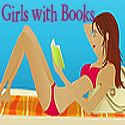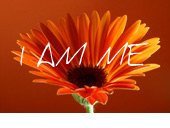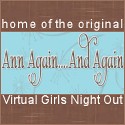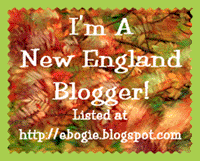I'm currently reading a work called The Book That Changed My Life, a compilation of essays written by famous authors, which tell about the books that changed their lives. Jack Prelutsky writes about how A Child's Garden of Verses got him interested in poetry. Jacquelyn Mitchard was so enchanted by A Tree Grows in Brooklyn that she named her daughter after the novel's protagonist, Francie Nolan. And Michael Stern waxes poetic about the wonders of the old Sears Catalogue.
This got me to thinking about the book that changed my life. There were many to choose from, but it was very difficult for me to think of that one. So I started thinking about my favorite books of all time. That made the search a little easier. And I soon realized that there was one book that I always came back to, that I always mentioned in any favorite book list. However, I will publicly admit that I wasn't so enchanted with this book when I first became aware of it.
I received Anne of Green Gables as a present for my 11th birthday. At the time, the original Anne of Green Gables miniseries was on the air, all over PBS, and was hugely popular among girls in my age group--well, most girls. I refused to watch the miniseries; it was so girly, and as a tomboy, I HATED lots of girly things. I especially hated period works and historical fiction. I remember reading The Witch of Blackbird Pond in the fourth grade and hating every minute of it. At the time I was really into the Babysitters Club and Sweet Valley Teens books, fluffy reads about girls my age. I was also seriously into science; my favorite book at the time was the Golden Books guide to rocks and minerals, which featured the most gorgeous illustrations I had ever seen.
Out of respect for the friend who gave me a copy of Anne of Green Gables, I started to read it. Well, I tried to read it, Lord did I try. I couldn't get beyond the chapter where Marilla doesn't even say hello to Anne before deciding to send her back to the orphanage--simply because she was a girl.
I was already living my own adolescent drama. I didn't need to read about it. I know what you're thinking--didn't the Babysitters Club and Sweet Valley Twins series have their own supposed adolescent drama? Yeah, but I knew that all the problems would be resolved at the end of the book, much like my favorite sitcom at the time, Full House. I was well aware that problems couldn't be solved in half an hour in real life, which is one of the reasons why I used Babysitters Club and Sweet Valley Twins to escape. Marilla Cuthbert was the antithesis of all of these happily-ever-after stories, and was all too real for me.
Plus, the book was too girly for me--all of those long dresses, lace, and updos. And it was old fashioned--no tv or radio, and lots of talk about things with "little scope for imagination."
I put the book away, but kept it. It lay on my bookshelf until the summer before I was a high school freshman. I took it with me on our annual vacation to Long Beach Island; I was older, and not as much of a tomboy, and thought I'd give the book another try.
I couldn't put it down and finished it in half a day.
I saw a lot of Anne in my eleven-year-old self. She really wanted to be something that she wasn't; she didn't want her red hair, but wanted it to be a "raven's hair black". So she did something about it--she bought some hair dye from an Italian salesman that promised that raven's hair black she so craved. And the result? Hair that was more parrot's green than raven's hair black.
As an eleven-year-old, I myself wanted to be something I wasn't. I wanted to be a child actress in Hollywood, playing all sorts of roles on TV, playing characters that weren't like me at all. I craved escape from my hometown, escape from my family, escape from my school--but mostly, escape from myself. And try as I could, I could never escape from being who I was--an eleven-year-old girl, with brown eyes and dark, curly hair, living in a Connecticut suburb full of eleven-year-old girls with blue eyes and straight, blonde hair.
As Anne matured, so did I. In my early teens, one of my favorite parts about the novel was that Anne was able to keep her grades at the top of her class, but also keep her friends. No one regarded her as a nerd, and I really liked that. I wanted to have what Anne had: intelligence, and popularity. I had the intelligence as a kid, but never the popularity. I stayed on the fringes throughout my schooling. Anne gave me hope that it was okay for a girl to be intelligent.
After that summer, I saved my babysitting money for trips to the mall, where I would dart immediately to the bookstore and buy the next books in the Anne series, and read them all with great relish. One I finished reading about Anne, I moved on to more Lucy Maud Montgomery books, among them, Emily of New Moon, The Story Girl, Kilmeny of the Orchard, and Pat of Silver Bush. All of the protagonists in these books were orphans like Anne. While I also enjoyed these works, none of them had the spirit, verve, or heart of any of the books in the Anne series. The Anne series developed characters you could really relate to, characters whom the reader had a special relationship with. I had trouble relating to the characters in Lucy Maud Montgomery's other books; they just didn't have the spunk or personality that Anne Shirley did.
This year is the 100th anniversary of Anne of Green Gables. While I have no plans to head up to Prince Edward Island this year, I do plan to reread the Anne series to mark the occasion.
As for my original copy of the book, I recently gave it to a ten-year-old girl at my church. (I received a three-volume set as a Christmas gift when I was a freshman in high school). This little girl reminded me of myself as a ten-year-old: full of spunk and energy. I thought that this book would be perfect for her. I hope she grows to love it as much as I have...even if she waits a few years to read it.
Sunday, June 8, 2008
Subscribe to:
Post Comments (Atom)


































No comments:
Post a Comment